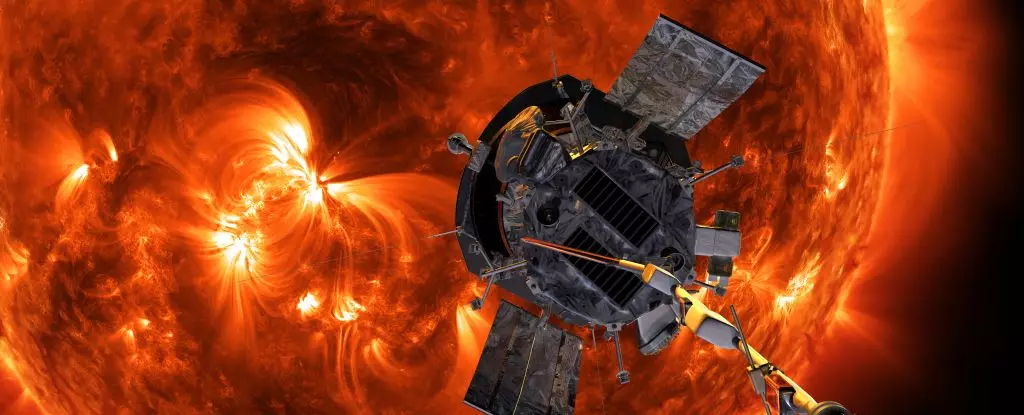On Christmas Eve 2023, NASA’s Parker Solar Probe is poised to set new benchmarks in space exploration. This unmanned spacecraft, launched in 2018, will make its 22nd close flyby of the Sun, skimming a mere 6.1 million kilometers (3.8 million miles) from the solar surface—an unprecedented approach for any human-made object. Traveling at a staggering speed of approximately 192 kilometers per second, the Parker Solar Probe is not only redefining our limits in speed and proximity but also promising to yield valuable insights into the complexities of our closest star. The upcoming perihelion, scheduled for December 24 at 06:53 EST (11:53 UTC), is a thrilling culmination of years of groundbreaking research and innovation.
The Parker Solar Probe has already surpassed expectations, setting records for both its proximity to the Sun and the speed at which it travels. The mission’s primary aim is to collect data that enhances our understanding of solar dynamics which remain enigmatic. “This mission exemplifies NASA’s spirit of innovation, venturing into territories unexplored to address fundamental questions about the universe,” states Arik Posner, Parker Solar Probe program scientist at NASA. Anticipation is growing for the scientific data to follow the upcoming encounter, with NASA eagerly awaiting status updates from the probe in the days following its flyby.
Diving Deeper into Solar Mysteries
One of the foremost challenges within solar physics is determining why the Sun’s outer atmosphere, the corona, is significantly hotter than its visible surface, known as the photosphere. The coronal temperature can exceed a million degrees Celsius, while the surface is relatively cool at about 5,500 degrees Celsius. Understanding this discrepancy is a scientific enigma that Parker is uniquely positioned to investigate through close-range measurements.
Another major question lies within the generation of the Sun’s complex magnetic field, which arises from processes deep within its interior. Additionally, the cyclical solar activities that impact space weather and have profound effects on our technological infrastructure on Earth need further elucidation. Parker’s close observations will allow scientists to gather data that might solve these mysteries, promising a richer understanding of solar dynamics over the coming years.
The December 24 flyby is particularly crucial as it represents a significant test of both the probe’s systems and its aim to collect data effectively. Nour Raouafi, the project scientist associated with Parker, likens the endeavor to “almost landing on a star.” The successful completion of this maneuver could be seen as comparable to the Apollo Moon landing—a testament to human ingenuity and ambition.
A Journey towards the Unknown
Once the Parker Solar Probe completes this flyby, it will celebrate an impressive milestone by transmitting a beacon tone on December 27 to confirm its survivability after such a close encounter with solar intensity. NASA’s mission operations manager, Nick Pinkine, emphasizes that no previous human-made object has ventured this close to a star, positioning the Parker Solar Probe on the frontier of scientific exploration. “We’re eager to receive data from the spacecraft as it swings back around the Sun,” says Pinkine, embodying the excitement permeating the scientific community.
Following this perihelion, Parker has plans for several more close approaches in 2025—potentially four more at similar speeds and distances—scheduled for the spring and fall. Each of these perihelions is another opportunity to gather crucial scientific data before the probe inevitably exhausts its fuel supply. The future will see the Parker Solar Probe continue its bold voyages until it can no longer perform necessary trajectory adjustments.
Despite its predicted fate, where Parker may enter a fiery demise battling the Sun’s heat, the mission remains one of unparalleled significance. Principal investigator Justin Kasper depicted a vivid image of the probe’s final moments, where, although the hardware may not survive, the legacy of the data returned will endure. Parker’s journey into the solar abyss promises to leave an indelible mark on the field of astrophysics, contributing to humanity’s understanding of one of its most critical cosmic neighbors.
The Parker Solar Probe exemplifies the audacity of scientific exploration, risking the unknown to address vital questions about the Sun’s behavior and its impact on the Solar System. As it prepares to rendezvous with the star that sustains life on Earth, it is not just a mission about distance and speed; it is an endeavor to unearth knowledge that has eluded scientists for generations. Through its pioneering spirit, the Parker Solar Probe symbolizes humanity’s unyielding quest to expand the boundaries of understanding, stirring both admiration and curiosity about the mysteries of our universe.

